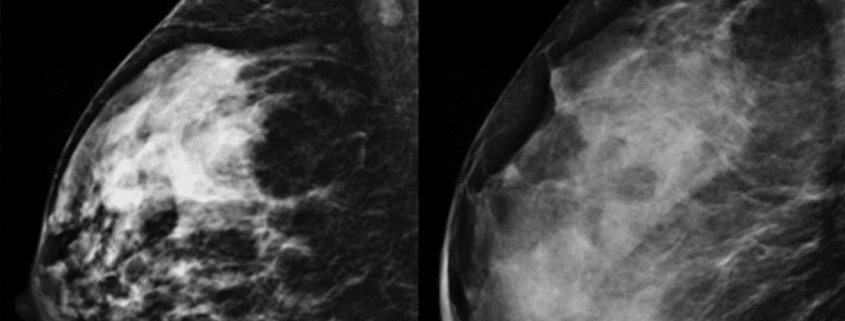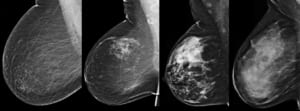What is Breast Density, and Why is it Important?
The American College of Radiology, the Society of Breast Imaging, and the National Comprehensive Cancer Network (NCCN), recommend that all women have yearly mammograms beginning at age 40. Women at high risk may benefit from starting earlier.
What is Breast Density?
Breasts are made up of a mixture of fibrous and glandular tissue and fatty tissue. Your breasts are considered dense if you have a lot of fibrous or glandular tissue but not much fat. Density may decrease with age, but there is little, if any, change in most women.
- 10% of women in the U.S. have almost entirely fatty breasts
- 10% have extremely dense breasts
- 80% are classified into one of two middle categories
How do I know if I have dense breasts?
Breast density is determined by the radiologist — the doctor who reads your mammogram. Your doctor should be able to tell you whether you have dense breasts based on where you fall on the density scale. Many states even have Breast Density Notification Laws, where doctors are required to inform their patients of their breast density following a screening Mammogram.
Why is Breast Density Important?
Having dense breast tissue may increase your risk of getting breast cancer. Dense breasts also make it more difficult for doctors to spot cancer on mammograms. Dense tissue appears the same on a mammogram as lumps, both benign and cancerous, making it difficult to distinguish lumps or differentiate between dense tissue and abnormalities. So, mammograms can be less accurate in women with dense breasts.
What are my screening options if I have dense breasts?
Even if you have dense breasts, you still need a yearly mammogram. A mammogram is the only medical imaging screening test proven to reduce breast cancer deaths. Many cancers are seen on mammograms even if you have dense breast tissue.
In breasts that are dense, cancer can be hard to see on a mammogram. Digital breast tomosynthesis (DBT), also called 3D mammography, provides images of the breast in “slices” from many different angles making some abnormalities easier to see. DBT increases the number of cancers seen without additional testing. Ultrasound (US) and magnetic resonance imaging (MRI) can help find cancers that can’t be seen on a mammogram. However, both MRI and US show more findings that are not cancer, which can result in added testing.
If you have dense breasts, please talk to your doctor. Together, you can decide which, if any, additional screening exams are right for you. If your breasts are not dense, other factors may still place you at increased risk for breast cancer — including a family history of the disease, previous chest radiation treatment for cancer and previous breast biopsies that show you are high risk.
Talk to your doctor and discuss your history. Even if you are at low risk, and have entirely fatty breasts, you should still get an annual mammogram starting at age 40.
Information sourced from the Mammography Saves Lives project, a collaboration between the Society of Breast Imaging and the American College of Radiology.




